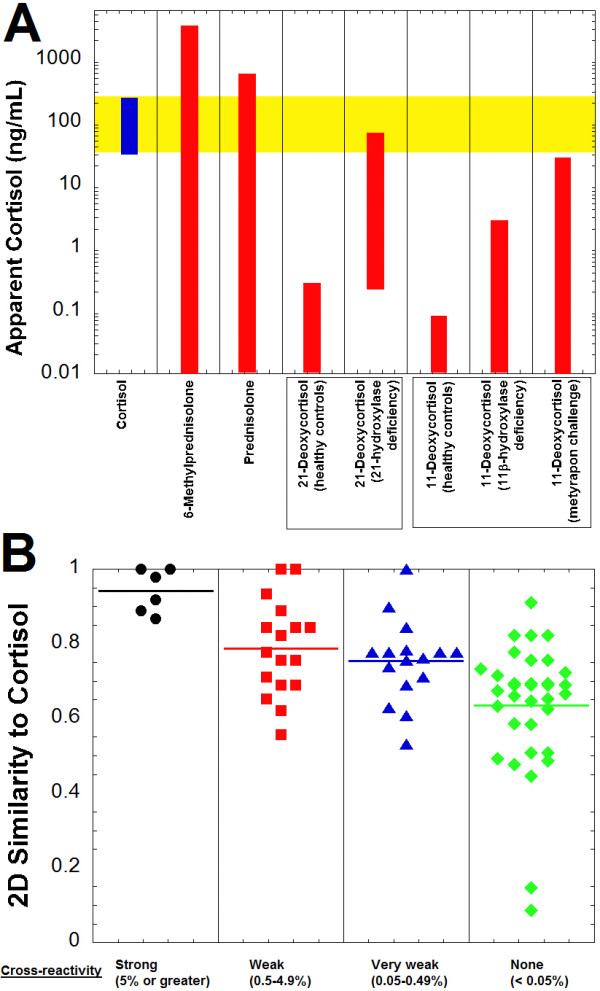Figure 2.

Cortisol immunoassay cross-reactivity and similarity predictions. A. The plot shows the cortisol reference range for adults (highlighted in yellow) in comparison to the predicted apparent cortisol concentrations produced on the Roche Elecsys Cortisol assay by 6-methylprednisolone, prednisolone, 21-deoxycortisol (healthy controls and patients with 21-hydroxylase deficiency), and 11-deoxycortisol (healthy controls, patients with 11β-hydroxylase deficiency, and following metyapon challenge). Table 1 contains the concentration ranges and percent cross-reactivity values from which the estimated apparent cortisol concentrations are derived. B. Two-dimensional similarity of compounds to cortisol is shown, sorted by degree of cross-reactivity in the Roche Cortisol assay (horizontal line in each column indicates average similarity within that group). Similarity values vary from 0 to 1, with 1 being maximally similar. The compounds are subdivided into categories of strong cross-reactivity (5% or greater, black circles), weak cross-reactivity (0.5-4.9%, red squares), very weak cross-reactivity (0.05-0.49%, blue triangles), and no cross-reactivity (<0.05%, green diamonds) to the Roche Cortisol assay (complete list of compounds and associated cross-reactivities and 2D similarities is in Additional file 1).
